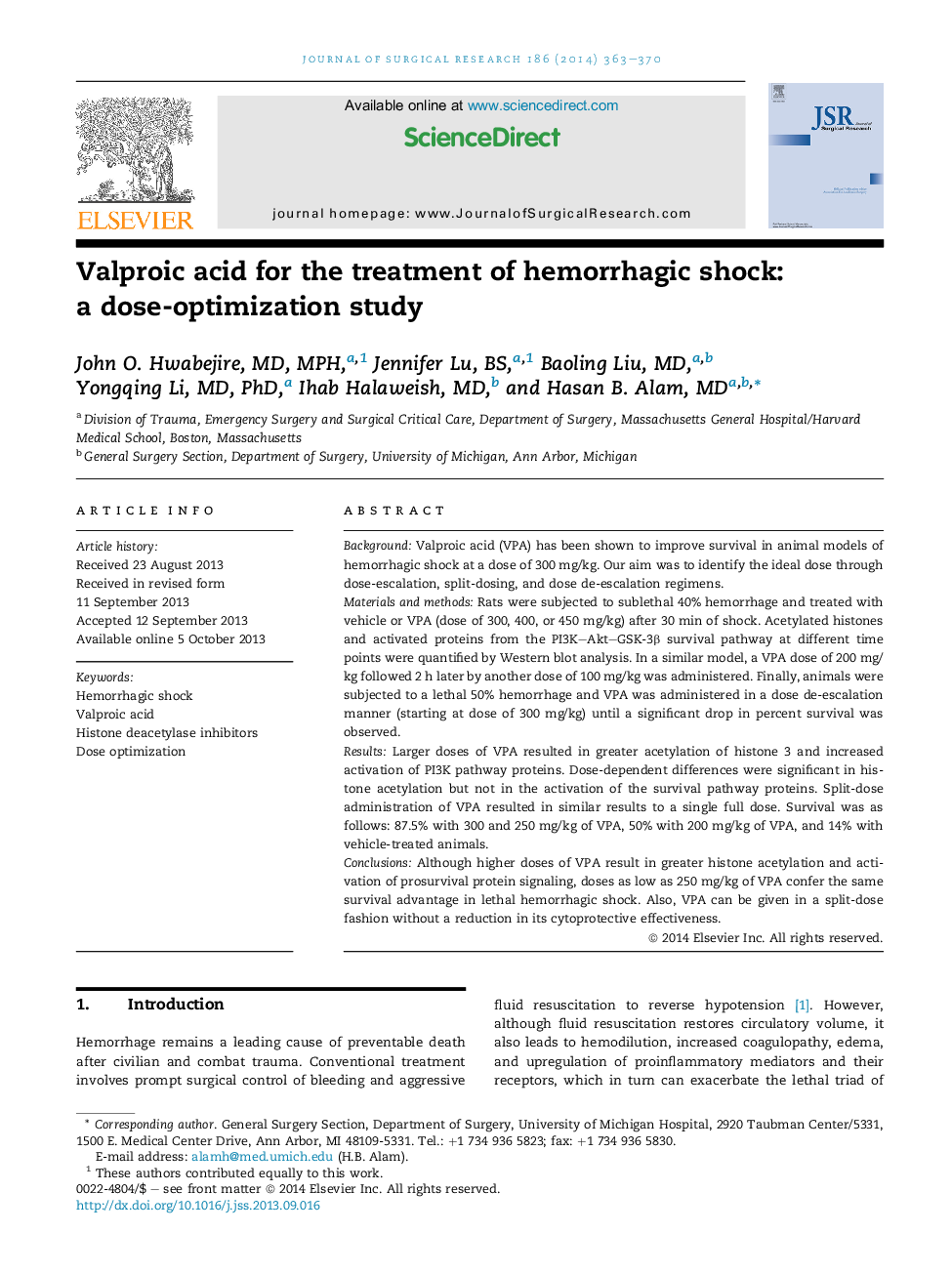| Article ID | Journal | Published Year | Pages | File Type |
|---|---|---|---|---|
| 6254216 | Journal of Surgical Research | 2014 | 8 Pages |
BackgroundValproic acid (VPA) has been shown to improve survival in animal models of hemorrhagic shock at a dose of 300 mg/kg. Our aim was to identify the ideal dose through dose-escalation, split-dosing, and dose de-escalation regimens.Materials and methodsRats were subjected to sublethal 40% hemorrhage and treated with vehicle or VPA (dose of 300, 400, or 450 mg/kg) after 30 min of shock. Acetylated histones and activated proteins from the PI3K-Akt-GSK-3β survival pathway at different time points were quantified by Western blot analysis. In a similar model, a VPA dose of 200 mg/kg followed 2 h later by another dose of 100 mg/kg was administered. Finally, animals were subjected to a lethal 50% hemorrhage and VPA was administered in a dose de-escalation manner (starting at dose of 300 mg/kg) until a significant drop in percent survival was observed.ResultsLarger doses of VPA resulted in greater acetylation of histone 3 and increased activation of PI3K pathway proteins. Dose-dependent differences were significant in histone acetylation but not in the activation of the survival pathway proteins. Split-dose administration of VPA resulted in similar results to a single full dose. Survival was as follows: 87.5% with 300 and 250 mg/kg of VPA, 50% with 200 mg/kg of VPA, and 14% with vehicle-treated animals.ConclusionsAlthough higher doses of VPA result in greater histone acetylation and activation of prosurvival protein signaling, doses as low as 250 mg/kg of VPA confer the same survival advantage in lethal hemorrhagic shock. Also, VPA can be given in a split-dose fashion without a reduction in its cytoprotective effectiveness.
